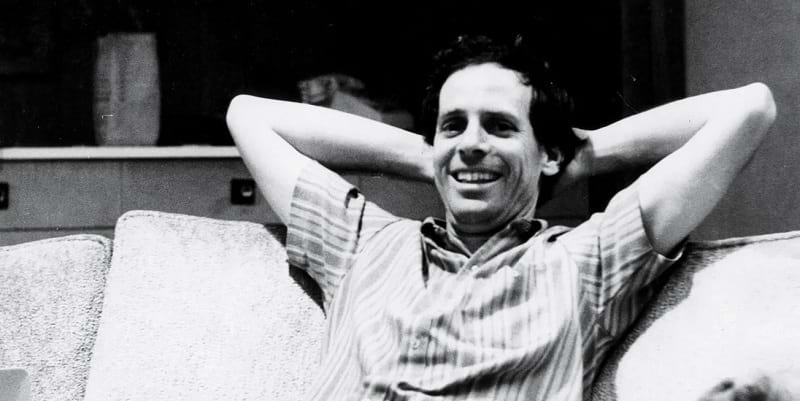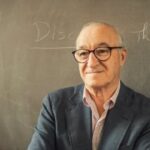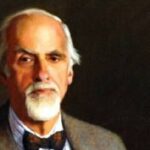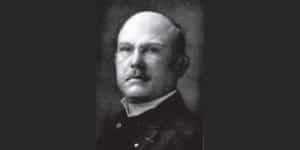Amos Tversky biography and books

Amos Tversky (Amos Nathan Tversky: March 16, 1937 – June 2, 1996) was an Israeli psychologist and one of the most influential figures in the discovery of systematic human cognitive bias and the handling of risk. In addition to revolutionizing the behavioral sciences, Amos Tversky also revolutionized behavioral economics. He pioneered the field of prospect theory with colleague Daniel Kahneman.
The biography of Amos Tversky
Amos Tversky was born in Haifa, in modern-day Israel. His father Yosef Tversky was a Polish-born veterinarian and his mother Jenia Tversky was a social worker. He had one sister, Ruth, who was thirteen years older. His mother later stated that Amos was self-taught, including in mathematics.
In high school, Amos Tversky took lessons from critic Baruch Kurzweil. He befriended Dahlia Ravikovich, a later award-winning and very well-known poet. He received a bachelor’s degree from the Hebrew University of Jerusalem in 1961.
A doctorate study followed at the University of Michigan in Ann Arbor in 1965. In that period, the young Amos Tversky had already developed a clear vision on researching judgment.
Military career
Prior to obtaining his aforementioned diplomas, Amos Tversky served in the Israeli Defense Forces (IDF), rising to the rank of captain in a paratrooper unit. He served on active duty during three wars and was wounded in 1956 during a military exercise with his unit.
In the role of platoon commander, He sent one of his soldiers to place an explosive charge on a fence to create a passage. The soldier placed the explosive, lit the fuse, and then lost control of his body. The soldier froze, Amos Tversky came to the aid of the soldier and managed to get the soldier away just before the explosion. For this act, he received Israel’s highest military award.
Further career and contribution to psychology
During his doctoral studies, Amos Tversky met Barbara Gans, a fellow student who later became a professor of cognitive psychology at Stanford University. This was in 1965. He married Barbara and together the couple had three children: Oren, Tal and Dona.
He taught at the Hebrew University of Jerusalem from 1966 to 1978 and then at Stanford University for several years. Here Amos Tversky became the first Davis-Brack Professor of Behavioral Sciences and principal investigator at the Stanford Center on Conflict and Negotiation. During his furloughs, he spent time at Harvard University and the Oregon Research Institute.
During his years in the United States he traveled to Israel frequently and from 1992 Amos Tversky was a Visiting Professor of Economics and Psychology and a fellow of the Sackler Institute of Advanced Studies at Tel Aviv University.
From 1990 until his death, he served on the faculty senate of Stanford University and on the advisory board of the Academic Council.
Daniel Kahneman and Amos Tversky
Amos Tversky is best known for his work with Daniel Kahneman. This collaboration began in the late 1960s and focused primarily on the biases and failures in rationality that are perpetually apparent in human decision-making. Their first paper ‘Belief in the Law of Small Numbers’ focused on the eleven cognitive illusions that influence human judgment.
The research was conducted using small-scale experiments that showed how subjects made irrational decisions under uncertain conditions. They introduced the notion of cognitive bias in the year 1972. This research was very influential in the field of economics, which then still assumed that all actors in the economy were rational.
The collaboration degenerated in the early 1980s. Daniel Kahneman stated that one of the reasons for this breakdown was that Amos Tversky received most of the credit for their investigations. Subsequently, there was a diminished generosity in the way the two interacted.
Approach to investigations
Daniel Kahneman once stated that Amos Tversky had perfect taste in choosing problems to investigate. He stated that Amos never singled out a problem and spent time on something that didn’t matter. This acted as an infallible compass that always helped him move forward in his career.
In 1984, Amos Tversky received a MacArthur Fellowship and in 1985 was elected to the National Academy of Sciences. He also jointly earned the Grawemeyer Award for Psychology with Daniel Kahneman.
After Amos Tversky’s death, Daniel Kahneman was awarded the Nobel Memorial Prize in Economic Sciences for the work they did together. Nobel Prizes cannot be awarded posthumously.
Although Amos Tversky was a good team player, he also had a habit of continuing to work alone at night when others were sleeping. He had a mindset of wanting to crush the intellectual opposition. He furthermore believed that humans lived in an uncertain existence in a probabilistic universe.
Amos Tversky died in 1996 from the effects of metastatic melanoma, skin cancer.
In addition to his contribution to psychology described in this biography, Amos Tversky influenced many more researches and breakthroughs, including:
- Prospect theory
- Availability heuristic
- Conjunction fallacy
- Behavioral finance
- Clustering illusion
- Loss aversion
- Tversky index
- Contrast model
- Support theory
Famous quotes
- “A part of good science is to see what everyone else can see but think what no one else has ever said.”
- “Chance is commonly viewed as a self-correcting process in which a deviation in one direction induces a deviation in the opposite direction to restore the equilibrium. In fact, deviations are not “corrected” as a chance process unfolds, they are merely diluted.”
- “Everything that has already happened must have been inevitable.”
- “Happy species endowed with infinite appreciation of pleasures and low sensitivity to pain would probably not survive the evolutionary battle.”
- “He who sees the past as surprise free is bound to have a future full of surprises.”
- “It is sometimes easier to make the world a better place than to prove you have made the world a better place.”
- “It’s frightening to think that you might not know something, but more frightening to think that, by and large, the world is run by people who have faith that they know exactly what is going on.”
- “Man is a deterministic device thrown into a probabilistic Universe. In this match, surprises are expected.”
- “My colleagues, they study artificial intelligence; me, I study natural stupidity.”
- “People accept any explanation as long as it fits the facts.”
- “People believe they can tell the future if they work hard enough.”
- “People live under uncertainty whether they like it or not.”
- “People often work hard to obtain information they already have and avoid new knowledge.”
- “People pay an enormous price to avoid mild embarrassment.”
- “People predict by making up stories.”
- “People predict very little and explain everything.”
- “So many problems occur when people fail to be obedient when they are supposed to be obedient, and fail to be creative when they are supposed to be creative.”
- “The difference between being very smart and very foolish is often very small.”
- “The handwriting was on the wall. It was just the ink that was invisible.”
- “The secret to doing good research is always to be a little underemployed. You waste years by not being able to waste hours.”
- “When you are a pessimist and the bad thing happens, you live it twice. Once when you worry about it, and the second time when it happens.”
- “Whenever there is a simple error that most laymen fall for, there is always a slightly more sophisticated version of the same problem that experts fall for.”
Books, articles and publications by Amos Tversky
- 1996. On the reality of cognitive illusions.
- 1995. Ambiguity aversion and comparative ignorance. The quarterly journal of economics, 110(3), 585-603.
- 1993. Reason-based choice. Cognition, 49(1-2), 11-36.
- 1993. Context-dependent preferences. Management science, 39(10), 1179-1189.
- 1992. The weighing of evidence and the determinants of confidence. Cognitive psychology, 24(3), 411-435.
- 1992. Choice under conflict: The dynamics of deferred decision. Psychological science, 3(6), 358-361.
- 1992. Choice in context: Tradeoff contrast and extremeness aversion. Journal of marketing research, 29(3), 281-295.
- 1992. Advances in prospect theory: Cumulative representation of uncertainty. Journal of Risk and uncertainty, 5(4), 297-323.
- 1991. Preference and belief: Ambiguity and competence in choice under uncertainty. Journal of risk and uncertainty, 4(1), 5-28.
- 1991. Loss aversion in riskless choice: A reference-dependent model. The quarterly journal of economics, 106(4), 1039-1061.
- 1989. Rational choice and the framing of decisions. In Multiple criteria decision making and risk analysis using microcomputers (pp. 81-126). Springer, Berlin, Heidelberg.
- 1988. Contingent weighting in judgment and choice. Psychological review, 95(3), 371.
- 1985. The framing of decisions and the psychology of choice. In Behavioral decision making (pp. 25-41). Springer, Boston, MA.
- 1984. Choices, values, and frames. American psychologist, 39(4), 341.
- 1983. Extensional versus intuitive reasoning: The conjunction fallacy in probability judgment. Psychological review, 90(4), 293.
- 1983. Affect, generalization, and the perception of risk. Journal of personality and social psychology, 45(1), 20.
- 1982. The psychology of preferences. Scientific American, 246(1), 160-173.
- 1982. On the elicitation of preferences for alternative therapies. New England journal of medicine, 306(21), 1259-1262.
- 1982. Judgment under uncertainty: Heuristics and biases. Cambridge university press.
- 1981. The simulation heuristic. Stanford Univ CA Dept of Psychology.
- 1977. Intuitive prediction: Biases and corrective procedures. Decisions and Designs Inc Mclean Va.
- 1977. Features of similarity. Psychological review, 84(4), 327.
- 1974. Judgment under Uncertainty: Heuristics and Biases: Biases in judgments reveal some heuristics of thinking under uncertainty. science, 185(4157), 1124-1131.
- 1973. On the psychology of prediction. Psychological review, 80(4), 237.
- 1973. Availability: A heuristic for judging frequency and probability. Cognitive psychology, 5(2), 207-232.
- 1972. Subjective probability: A judgment of representativeness. Cognitive psychology, 3(3), 430-454.
- 1972. Elimination by aspects: A theory of choice. Psychological review, 79(4), 281.
- 1971. Belief in the law of small numbers. Psychological bulletin, 76(2), 105.
- 1969. Intransitivity of preferences. Psychological review, 76(1), 31.
How to cite this article:
Janse, B. (2023). Amos Tversky. Retrieved [insert date] from Toolshero: https://www.toolshero.com/toolsheroes/amos-tversky/
Published on: 01/17/2023 | Last update: 04/03/2023
Add a link to this page on your website:
<a href=”https://www.toolshero.com/toolsheroes/amos-tversky/”>Toolshero: Amos Tversky</a>











